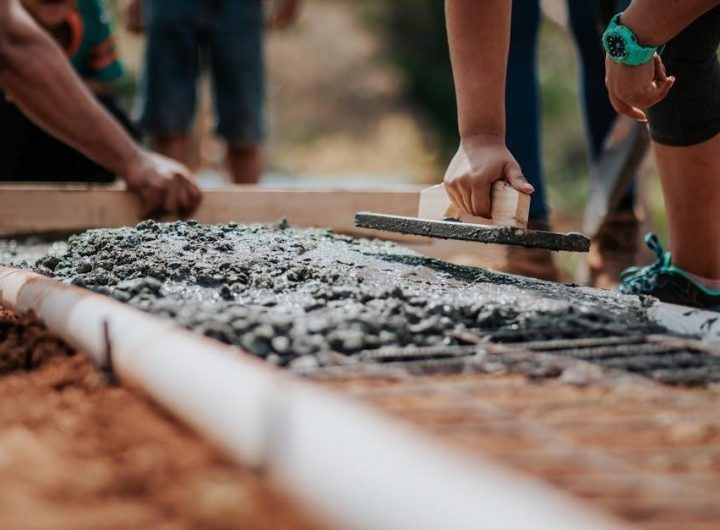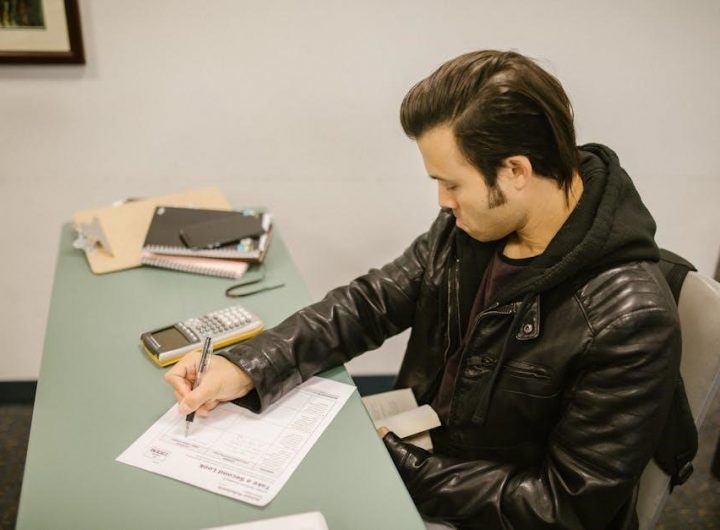Lycoming O-360 Overhaul Manual⁚ A Comprehensive Guide
This manual provides a complete guide for the major overhaul of Lycoming O-360 series aircraft engines. It includes detailed procedures, diagrams, and specifications for various components, ensuring a thorough and efficient overhaul process. Essential tools and safety precautions are also discussed.
The Lycoming O-360 is a renowned horizontally opposed, four-cylinder, air-cooled aircraft engine known for its reliability and widespread use in general aviation. Its design features a direct-drive system, wet sump lubrication, and typically a carburetor (though fuel-injected versions exist). The O-360 series encompasses numerous variations, each with slight differences in specifications and performance characteristics, including the O-360-A1A, O-360-H, and IO-360 variants. This engine’s robust construction and relatively simple design make it a popular choice for various aircraft, contributing to its extensive service history and readily available parts. Understanding its components and operating principles is crucial for successful overhaul.
This comprehensive overhaul manual details the procedures for maintaining and restoring the O-360 engine to its peak performance. The engine’s longevity and reliability are highly valued, making proper maintenance essential. This manual addresses the specific needs of various O-360 models and sub-models, ensuring the instructions are relevant and accurate for your particular engine variant. This ensures you have the correct information for your maintenance and overhaul tasks.
General Overhaul Procedures⁚ Step-by-Step Guide
This section provides a structured, step-by-step approach to the Lycoming O-360 engine overhaul. Begin by meticulously documenting the engine’s current condition, including any existing damage or wear. A thorough cleaning is crucial, removing all dirt, grease, and debris before disassembly. Disassembly should follow a logical sequence, carefully noting the location and orientation of each part. This is essential for accurate reassembly. Component inspection is paramount; each part should be examined for wear, cracks, or other defects. Replace any components that do not meet specifications. This will help prevent future issues.
Reassembly is equally critical and should be performed with precision, following the reverse order of disassembly. Torque specifications must be strictly adhered to, using appropriate tools and techniques to avoid damaging components. After reassembly, a thorough leak check is necessary to identify and rectify any oil or fuel leaks. The ignition system requires special attention, ensuring proper timing and functionality. Finally, a comprehensive run-up test is conducted to validate the engine’s performance following the overhaul. This ensures the engine is functioning correctly and safely. Throughout the process, reference the detailed diagrams and specifications provided in this manual to ensure accuracy and efficiency.
Detailed Breakdown of the Ignition System
The Lycoming O-360 ignition system, crucial for reliable engine operation, demands careful attention during overhaul. This section details the systematic inspection and servicing of this critical component. Begin by removing the magnetos from the engine, ensuring careful handling to avoid damage to the delicate internal components. A thorough cleaning of the magnetos is essential, using appropriate solvents and techniques to remove dirt and debris that can affect performance. Following cleaning, a comprehensive inspection is necessary to identify any cracks, wear, or other defects in the magneto housing or internal components. This includes checking for proper operation of the breaker points, condenser, and other electrical components.
Magneto timing is a critical aspect of ignition system function, and precision is paramount. Use specialized tools and follow the manufacturer’s instructions to accurately set the timing. Testing the magneto output with appropriate equipment is necessary to verify the strength and timing of the spark. This ensures that the ignition system is providing sufficient spark energy for consistent and reliable combustion. After the magnetos have been inspected, cleaned, timed, and tested, they are reinstalled on the engine, ensuring proper alignment and secure fastening. Finally, a thorough testing of the entire ignition system is performed to confirm reliable operation before the engine is returned to service. Adherence to these steps ensures optimal ignition system performance.
Overhauling the Accessory Housing⁚ A Detailed Approach
The accessory housing, a critical component of the Lycoming O-360 engine, houses vital systems like the oil pump, fuel pump, and other accessories. Its overhaul requires meticulous attention to detail. Begin by carefully removing the accessory housing from the engine, documenting the position and orientation of all components for accurate reassembly. Thoroughly clean the housing, removing any accumulated oil, grease, or debris. A visual inspection is crucial to identify any cracks, wear, or damage to the housing itself. Pay close attention to the mounting surfaces and threaded holes for any signs of wear or damage that could compromise the seal or structural integrity. Inspect all seals and gaskets for wear, damage, or deterioration, replacing them as needed with new, correctly specified components. The oil pump, often integrated into the accessory housing, should be removed, inspected, and tested for proper functionality and flow rates, according to the manufacturer’s specifications. Any worn or damaged parts should be replaced.
Once the inspection and repair processes are complete, thoroughly clean all parts before reassembly. Carefully reinstall all components into the accessory housing, ensuring proper alignment and torque specifications. Use a new gasket to ensure a proper seal. After reassembly, thoroughly inspect the accessory housing for leaks. A final test of the oil pump and other integrated components is necessary to ensure the proper function of the entire system. Accurate reassembly and thorough testing are crucial for the reliable and safe operation of the engine.
Cylinder, Piston, and Valve Train Overhaul
Overhauling the cylinders, pistons, and valve train of a Lycoming O-360 engine demands precision and adherence to specifications. Begin by carefully removing the cylinders from the crankcase, noting their orientation and any markings. Inspect each cylinder for wear, scoring, or cracks, paying close attention to the bore and the cylinder head mating surface. Measure the cylinder bore diameter to determine wear and ensure it remains within acceptable tolerances. If the cylinder is beyond the limits, replacement is necessary. The pistons should be removed and thoroughly inspected for wear, scoring, or damage to the piston rings, skirts, and crown. Measure the piston-to-cylinder clearance to ensure it is within the manufacturer’s recommended range. Excessive wear requires piston replacement. The connecting rods should also be inspected for cracks, bending, or wear. Examine the valve train components—valves, guides, springs, keepers, and rocker arms—for wear, damage, or malfunction. Measure valve stem-to-guide clearance, and check for proper valve spring pressures. Replace any worn or damaged components. Before reassembly, clean all parts meticulously and lubricate components as specified. Ensure proper piston ring installation and correct orientation. Carefully install the cylinders, pistons, and connecting rods, meticulously following the engine manufacturer’s torque specifications for all fasteners. After reassembly, a leakdown test should be performed to verify cylinder sealing.
Crankcase, Crankshaft, and Related Components
The crankcase and crankshaft are critical components in the Lycoming O-360 engine, requiring meticulous attention during overhaul. Begin by carefully removing the crankcase halves, taking note of their orientation and any alignment dowels. Inspect the crankcase for cracks, distortion, or damage to the mounting surfaces. Check for wear or scoring on the crankcase bearing journals. The crankshaft should be removed and thoroughly inspected for cracks, bending, or wear on the main and connecting rod journals. Measure the crankshaft journal diameters to ensure they are within the manufacturer’s specifications. Excessive wear necessitates crankshaft replacement or regrinding. Inspect the main and connecting rod bearings for wear, scoring, or damage. Measure bearing clearances to ensure they are within the specified tolerances. Replace any worn or damaged bearings. Examine the oil pump and its components for wear or damage. Check the oil pump pressure relief valve operation. Replace the oil pump if necessary. Clean all parts thoroughly using appropriate solvents. Before reassembly, inspect the crankcase for proper alignment. Install the crankshaft and bearings, carefully ensuring proper alignment and bearing clearances. Install the oil pump and related components, carefully following the manufacturer’s torque specifications. After reassembly, perform a thorough oil pressure test to ensure proper system operation. A final inspection should verify proper sealing and the absence of leaks.
Essential Tools and Equipment for the Overhaul
A successful Lycoming O-360 overhaul demands a comprehensive set of specialized tools and equipment. Precision measuring instruments are paramount, including micrometers, dial indicators, and bore gauges for accurate dimensional checks of critical components. Torque wrenches with appropriate adapters are essential for tightening fasteners to the manufacturer’s specified torque values, preventing damage and ensuring proper engine operation. Specialized engine stands and lifting equipment are necessary for safe and efficient handling of the heavy engine components. A variety of hand tools, such as sockets, wrenches, screwdrivers, and pliers, are needed for disassembly and reassembly tasks. Engine cleaning equipment, including parts washers and appropriate solvents, is crucial for removing contaminants and ensuring cleanliness of parts before reinstallation. Specialized tools may be required for specific tasks, such as cylinder head removal, crankshaft installation, and valve train adjustment. A comprehensive set of gaskets, seals, and O-rings is essential for proper engine sealing and leak prevention; Reference materials, such as the Lycoming O-360 overhaul manual and parts catalog, provide essential technical information and component identification. Properly calibrated measuring tools and adherence to the manufacturer’s specifications are vital to ensuring a successful overhaul. Access to a clean, well-lit workspace is also crucial.
Troubleshooting Common Issues During Overhaul
During a Lycoming O-360 overhaul, encountering various issues is common. One frequent problem is difficulty removing stubborn nuts and bolts. Applying penetrating oil and using appropriate tools, such as impact wrenches or heat, can resolve this. Another challenge involves damaged or seized components. Careful inspection and potentially specialized extraction tools may be necessary. Improperly fitting parts can also occur. Double-checking part numbers and dimensions against the overhaul manual is critical. Leakage from seals and gaskets is a common concern. Replacing them with new parts and ensuring proper installation techniques are essential. Incorrect valve adjustment can lead to performance problems. Following the engine manual’s detailed procedures for valve adjustment is vital. Difficulty starting the engine after reassembly might indicate issues with fuel delivery, ignition, or compression. Systematic troubleshooting, checking fuel lines, spark plugs, and cylinder compression, is needed. If discrepancies arise during inspection, referring to Lycoming’s service bulletins and technical publications is recommended. Addressing these common issues promptly and effectively using the correct procedures ensures a successful engine overhaul and safe operation. Maintaining meticulous records throughout the process aids in effective troubleshooting. Always prioritize safety and consult the overhaul manual before undertaking any corrective action.
Safety Precautions and Regulations
Overhauling a Lycoming O-360 engine demands strict adherence to safety regulations and precautions. Before commencing any work, ensure the engine is completely disconnected from the aircraft’s electrical and fuel systems. Properly grounding the engine prevents accidental electrical shocks. Always wear appropriate personal protective equipment (PPE), including safety glasses, gloves, and hearing protection. Work in a well-ventilated area to avoid inhaling harmful fumes or particles. Use only approved tools and equipment for the specific tasks. Improper tools can lead to damage or injury. Handle engine components with care to prevent damage or breakage. Keep a clean and organized workspace to reduce the risk of accidents. Consult the Lycoming O-360 overhaul manual and any applicable service bulletins for specific safety guidelines. Proper disposal of hazardous materials, such as oils and solvents, must be followed according to local regulations. Familiarize yourself with the engine’s operating procedures and limitations. Never attempt an overhaul without the necessary training and experience. If unsure about any procedure, seek guidance from a certified mechanic. Regularly inspect tools and equipment for damage or wear. Replace any damaged or worn items immediately. Maintain a clear understanding of all safety regulations and guidelines. Thoroughly clean the engine compartment before and after the overhaul. This helps prevent contamination and ensures a safe working environment. Remember, safety is paramount throughout the entire overhaul process.
Post-Overhaul Inspection and Testing
Following the Lycoming O-360 engine overhaul, a meticulous inspection and testing phase is crucial to ensure airworthiness and optimal performance. This process verifies the successful completion of all repair and replacement tasks and identifies any potential issues before engine installation. A thorough visual inspection checks for any signs of damage, leaks, or improper assembly. This includes examining all components for wear, cracks, or other defects. Compression tests measure the pressure within each cylinder, indicating the integrity of the piston rings and valves. Leakdown tests assess the sealing efficiency of the cylinders, valves, and piston rings. A thorough check of the ignition system ensures proper spark plug function and timing. The lubrication system is carefully inspected for leaks and proper oil pressure. The fuel system is checked for leaks and proper fuel flow. Testing procedures may also involve a run-up test to evaluate engine performance under various operating conditions. This involves monitoring parameters such as RPM, oil pressure, and cylinder head temperature. All inspection and testing results are meticulously documented. Any discrepancies found during the inspection and testing phase must be addressed before the engine is declared fit for service. This documentation serves as proof of compliance with regulatory requirements and quality standards. The post-overhaul inspection and testing process is critical for ensuring the reliable and safe operation of the overhauled Lycoming O-360 engine.
Maintaining the Overhauled Engine⁚ Tips and Best Practices
Prolonging the lifespan and ensuring optimal performance of your overhauled Lycoming O-360 engine requires diligent maintenance. Adherence to the manufacturer’s recommended service intervals is paramount. Regular oil changes using the specified grade and quantity are essential for lubrication and preventing wear. Inspecting oil levels frequently helps detect leaks or consumption issues promptly. Careful monitoring of oil pressure and temperature gauges during operation provides early warning of potential problems. Regularly inspect all fuel lines, connections, and filters for leaks or blockages. The ignition system should be checked for proper spark and timing, ensuring consistent combustion. Regularly inspect the propeller for damage or imbalance, addressing any issues immediately. Keep the engine’s cooling system clean and free from obstructions to maintain efficient heat dissipation. After each flight, allow the engine to cool down naturally before shutting it down. Avoid prolonged operation at high power settings, unless absolutely necessary. Store the aircraft in a clean, dry environment to protect the engine from corrosion and moisture damage. Properly scheduled maintenance, paying attention to details like oil changes, fuel system inspections, and cooling system checks, prevents premature wear and tear and ensures the longevity of the engine. Regularly consulting the Lycoming O-360 maintenance manual for specific recommendations will contribute to maintaining optimal engine health and performance.
Resources and Additional Information
Beyond this overhaul manual, several resources offer valuable support for maintaining your Lycoming O-360 engine. Lycoming’s official website provides comprehensive technical documentation, service bulletins, and parts catalogs; These resources offer detailed specifications, diagrams, and troubleshooting guides, ensuring you have access to the most up-to-date information. Numerous online forums and communities dedicated to aviation mechanics and Lycoming engines offer a platform to connect with experienced professionals. Sharing knowledge and experiences can be invaluable for addressing specific challenges or seeking advice on maintenance procedures. Independent aviation publications and journals often feature articles and technical information related to Lycoming engines, offering insights into best practices and emerging technologies. These publications offer a broader perspective on engine maintenance and can provide valuable supplementary information to the official manuals. Specialized aviation tool suppliers can provide information on the most suitable tools and equipment for your specific needs. They can offer guidance on selecting high-quality, reliable tools that meet the demands of the Lycoming O-360 overhaul. Remember to consult multiple sources and always prioritize information from reputable sources, such as the engine manufacturer and certified aviation professionals, when making decisions regarding your engine’s maintenance and repair.
 2023 hyundai santa fe manual
2023 hyundai santa fe manual  orbit 57899 manual
orbit 57899 manual  ipod shuffle instruction manual
ipod shuffle instruction manual  yamaha rx-v6a manual
yamaha rx-v6a manual  48 laws of power summary pdf
48 laws of power summary pdf  saskatchewan rental agreement pdf download
saskatchewan rental agreement pdf download  citi program quiz answers pdf
citi program quiz answers pdf